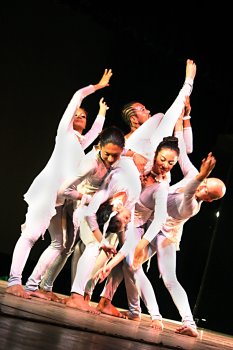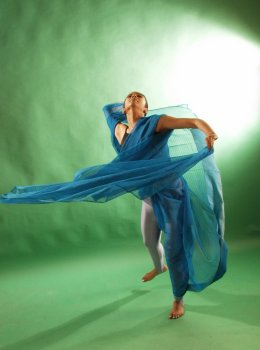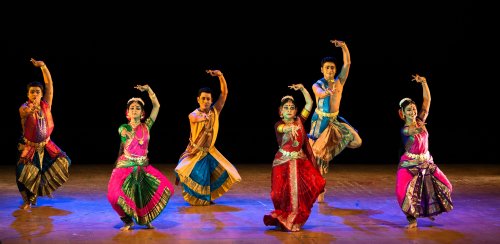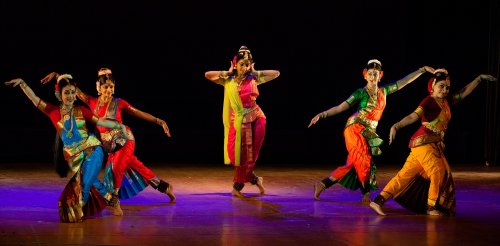
|   |

|   |
Celebration of Rabindra Jayanti - Sulagna Mukhopadhyay e-mail: sulagna64@gmail.com May 29, 2013 The birthday of Tagore is celebrated religiously every year among Bengali speaking community across the world. It has become a cliché and at times some of the productions are bizarre and jaw-dropping both in content and presentations. This year, we had a chance to observe two important productions at Rabindra Sadan. The first one was Rituranga by Sapphire Creations Dance Workshop (14th May) followed by Dakhina Pabane by Kalamandalam Kolkata (20th May). While Sudarshan Chakraborty choreographed the dance numbers following the ballet form, Dr. Thankamani Kutty remained within the pure Bharatnatyam style. Scripted by Dr. Partha Ghose, Rituranga (A Symphony of Seasons) dealt with the six seasons in an idiomatic way. Tunes of the songs were mostly used to express the poet’s feelings towards each of the seasons. The seasons are traced from the beginning of the Bengali New Year with the onset of the Summer season. The true mood of baishakh (the first month in a Bengali calendar) in the song “esho he boishak” was depicted eloquently by Sudarshan. Each season showcased two songs and dances. The song “Eki labonye” by Samarjit Guha needs special mention. Sapphire has used Rituranga as a device to portray the inner journey of man in his life starting from a toddler till his death. Sudarshan’s choreography used intricate geometrical patterns, which elevated the show above the daily mundane choreographies. Paramita Saha, Nikita Bhattacharya, Ankita Duttagupta, Rima Halder, Pintu Das, Koushik Das and Dibyendu Nath used the ballet genre to give shape to the script. They all danced elegantly 

Sapphire
Creations
Photos courtesy: Sudarshan Chakravorty  Kalamandalam Kolkata Photo courtesy: Somnath G Kutty  Kalamandalam Kolkata Photo courtesy: Somnath G Kutty Tagore got often influenced by various classical and folk music genres. Many of his renowned songs were influenced by Carnatic music style. Kalamandalam Kolkata staged a well-researched production including dance, songs, and multi-media. Conceptualised by Somnath G Kutty, the dancers dealt with four Carnatic bhajans and their counterparts by Tagore .The reputed song Anondoloke mongolaloke was based on the tune of the bhajan Lavanya Rama. Thankamani Kutty used both Bharatanatyam and Mohiniattam styles in her choreography. The dancers were poised and gallantly charmed the connoisseurs through expressions and movements. The production became the most authoritative text on the artistic technique of South Indian classical dances. The Rabindra sangeets were sung by Swagatalakshmi Dasgupta and the Carnatic songs were rendered by Sukumar G Kutty. The script could have been a little shorter. Sulagna Mukhopadhyay was trained in Bharatanatyam by Guru Thankamani Kutty and Indian folk by Late Botu Pal. She has an M.A. in Comparative Literature and has freelanced for various leading newspapers of Kolkata like The Telegraph, The Statesman and Ananda Bazar Patrika. She has written articles on dance and gender issues. She is a teacher of South Point School since 1996. |